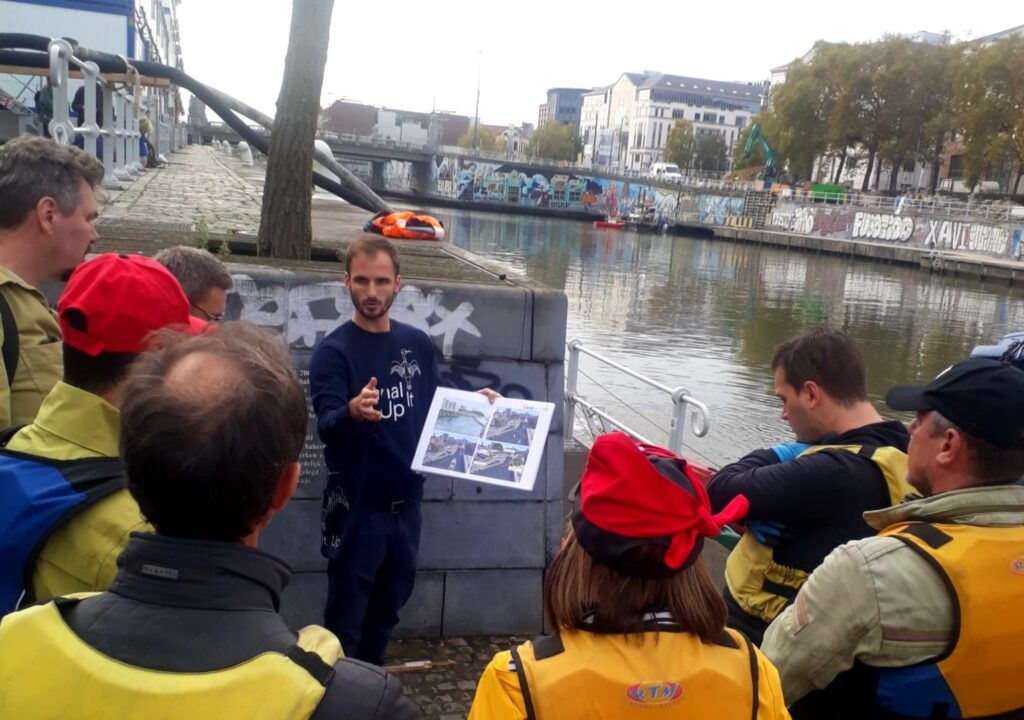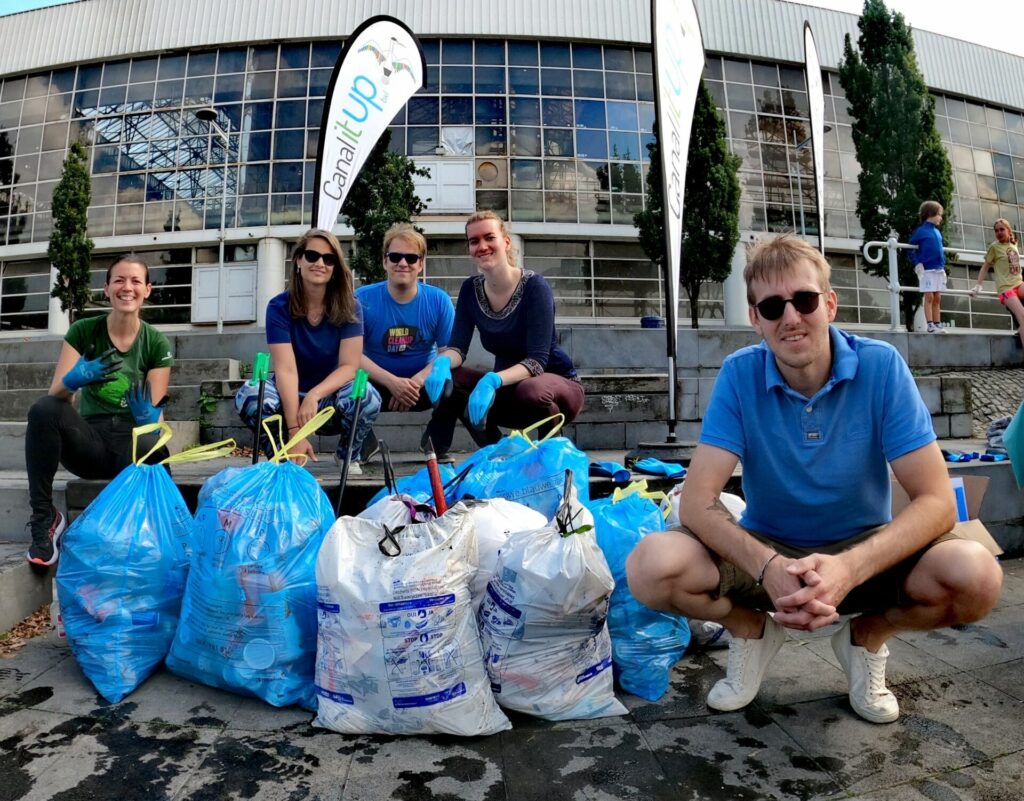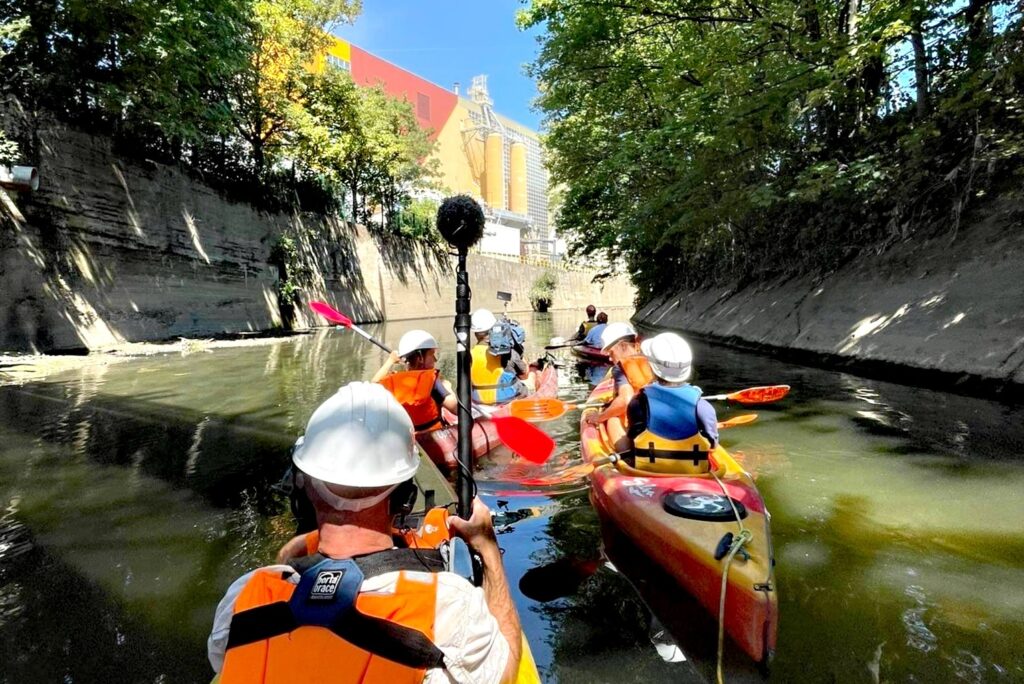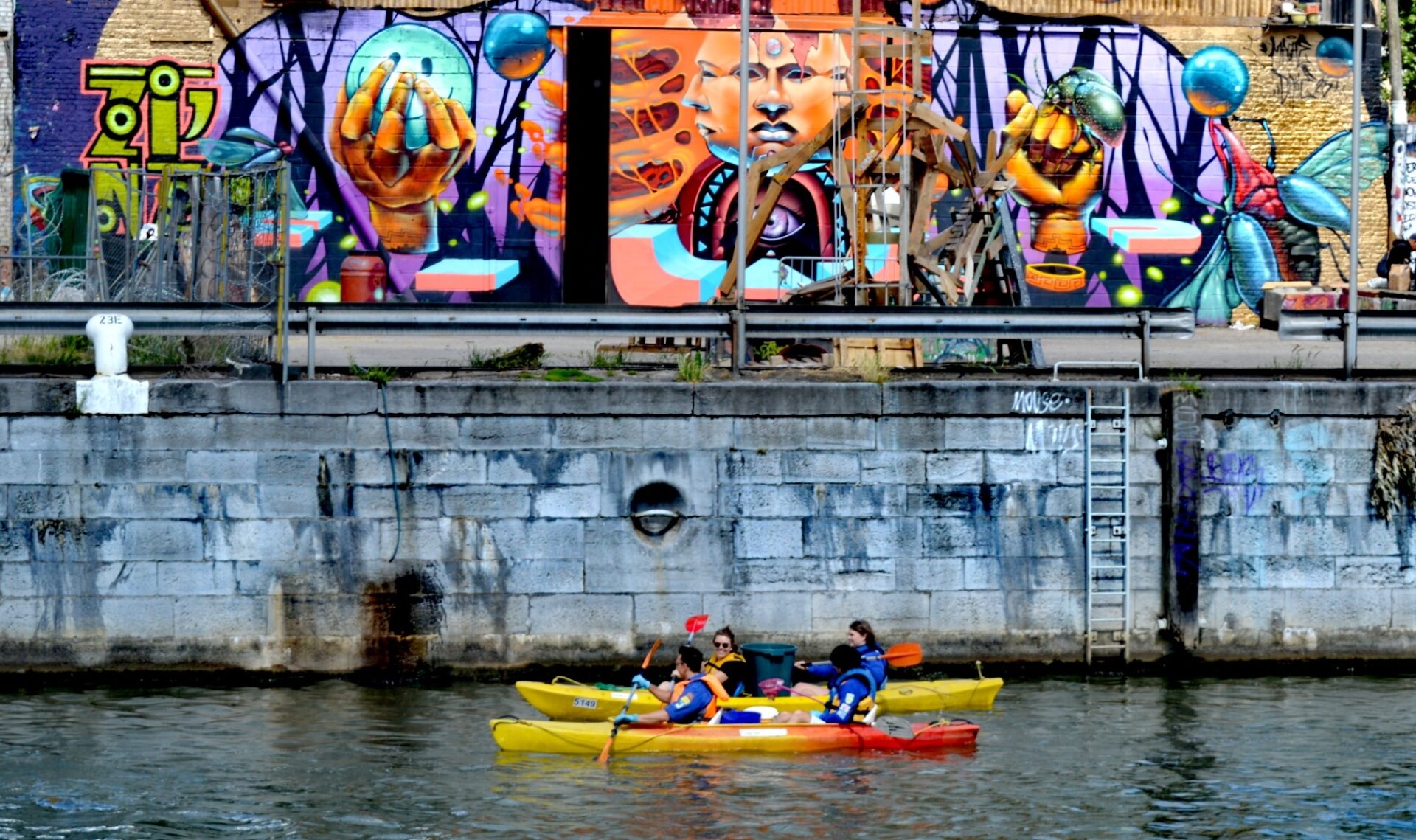It was a sunny afternoon in May four years ago. I went outside with my newspaper to sit along the canal, which is just 50 metres from my apartment. But glancing at the water, I noticed something for the first time: lots and lots of floating trash.
I’m from Brussels. I want to be proud of my city and want others to be proud of Brussels. So, without thinking it through, I decided to do something about it: I would buy a second-hand kayak to go and clean the canal myself.
When I sent a message to my girlfriend with my new idea, she said the idea was too crazy to work. She was echoed by friends, who told me in the weeks after that the canal was a no-go zone. However, their reactions made clear what else was wrong with the canal: nobody was embracing it as part of the city.
Two weeks later I found a kayak online and bought it. My aim at that time was simply to go and clean it up myself. But now there is more to my mission.
Firstly, I’m worried about where our world is going, and how our children will live – including my own son, who was born last May. Climate change is getting worse, as last summer’s flood, fires and heatwaves showed, while countries around the world are still slow to react.
And secondly, I’m always on the lookout for new experiences to enrich my life. A few years ago, with my girlfriend, we did a 75-day streak of new experiences every day, big and small. It changed how I saw things: I saw opportunities that I didn’t before. I realised that anything is possible if you just try.
New perspective
The first time I went down into the canal with my kayak, I took my brother. On the water, you see the city from another angle. You can enjoy the immense space you have, paddling in any direction – and when you look at the quay, you just see pedestrians, cyclists, cars and buildings fighting for space. The next week my girlfriend joined me, followed by a new friend every week.
The basic task was the same: to fish trash out of the canal. Most of the rubbish is single-use plastics. There are bottles, plastic bags and also cans, clothes and shoes. Sometimes there are dead rats and birds or other dead animals. However, I soon realised that the stream of refuse just kept coming. It was too much: one hour later, new rubbish would pop up.
I also started looking at the canal differently. I noticed there are no habitats for animals or vegetation. The canal flows through Brussels for 14km and is inherently part of the city fabric, but it could almost be reduced to a highway for boats with stone walls, floating trash and polluted water.
The prerequisite for a waterway that is part of people’s and animal’s lives is to be clean and safe enough – but this is not the case in Brussels.
So it was then that Canal It Up was born. I could see that people liked getting out on the canal to go and fish for trash. I started with a Facebook page with stories about the trips on the canal to spread the word about the project.

Planning an outing
Thanks to the pandemic amongst other factors, it took a while to get going, but we used our time to secure (online) meetings with ministers and officials to get funding and permits.
And we came up with ideas.
We developed a concept for a mobile trash barrier that would stop all floating trash. The barrier would be installed in front of the Molenbeek lock, it would cover the width of the canal and would be opened and closed by the lock operators every time a boat would pass.

Trask retrieved during a Kayak outing
We developed the concept for the trash barrier and then contacted renowned architect Luc Schuiten to take it further, as not just a machine that stops trash but something that would be an upgrade for the neighbourhood. This green fence stopping the trash from making its way to the sea symbolically gives a voice to nature.
As for the problem of lack of nature and biodiversity, we developed a project of floating islands with water plants with a Scottish firm. We presented the islands to the Port of Brussels and they have now installed a first pilot project of 220 square metres of islands with water plants - and they have committed to triple the surface in the coming years.
The islands add habitats for fish, birds and insects in a place where there are no habitats today and they add nature for the citizens in very densely populated areas.
Water quality
The water quality is a much bigger fish to fry, so to speak. While a trash barrier will help, it’s the entire rainwater system that needs to change to make the biggest impact.
However, the main reason for the bad water quality is that the sewers cannot absorb all the water, so when there are heavy rains, the sewage overflows. It overflows into the Senne river on average seven times a month. If the level keeps on rising, it then makes its way back to the canal, and this happens one to three times per month.
Some 10 million cubic metres of polluted water is discharged into our waterways – enough to fill 4,000 Olympic-size swimming pools.
Since there’s no grille or barrier to keep out the trash, everything just flows into the canal. All the rats, for instance, flow in with the contaminated water. And every sewage overflow is a microplastic bomb. The sewers are full of these tiny plastic particles – as well as macroplastics, toilet paper, tissues and organic pollution – or human waste. It's the main reason for the bad water quality of the canal and the Senne.
We have to make sure rainwater doesn’t flow to the sewers anymore. We can do it by making the water pass into the ground, by storing it in water basins for reuse and by slowing it down. We have been working with the Brussels government on this - and taking lots of other actions like our tongue-in-cheek ‘Hold your pee and poo when it rains’ poster campaign asking people not to go to the toilet when it rains.
It can be done. Paris, once known as one of the dirtiest cities in Europe, is a model of how to become a sustainable system. It began separating its rainwater pipes from its sewer pipes in the 1990s.
While 10 million cubic metres of contaminated rainwater overflows into the Senne in Brussels, in Paris’s Seine, the number is three million, and it will soon be zero (indeed, in next year’s Summer Olympics in Paris, the organisers will have swimming events in the Seine).
Raising awareness
We’ve been working on other issues to help address the water quality in the canal.
This year, we ran a pilot project of plinth installations along the quayside to stop trash from falling into the water. Most of the trash in the canal is blown by the winds into the canal. We used steel and plastic – but concluded that plastic would degrade over time due to weather, wind and UV radiation (and lead to microplastics finding their way into the canal).
So we chose galvanised steel. It is 3mm thick and can be up to 23cm high, which would be the level of the lowest horizontal bar of the railings. At a cost of about €23/metre over 9.7 km, that would run to just €250,000 for the entire canal - a very small investment that would stop a very large amount of waste.
We are also looking at the trash that ends up in our waterways. We found, for example, that supermarket chain Colruyt is the single biggest source of plastic waste in the canal, ahead of Coca-Cola.

The kayaks passing through a narrow part of the river
We are pushing for regulation to deal with rubbish collection: we spoke in both the Flemish and Brussels parliaments to ask for the introduction of the deposit system on cans and plastic bottles in Belgium and the use of more reusable packaging. The deposit system only would avoid 40% of litter in the canal and elsewhere in Belgium for that matter.
And our work is not just in the canal: our team has also done trips down the Senne, including a 9km underground trip as the river passes beneath the Midi station, past the Sewer Museum, the Sainctelette the Maximilien Park and the Docks shopping centre. And we have done the 16km trip down the Senne to Flanders.
While we work on these problems, we organise trips for people to go out on the canal by kayak. The trips are all year round, two days a week, (up to four days a week in summer) and last 90 minutes.
We paddle to the Molenbeek locks at one end and paddle the other way until the Jules de Trooz bridge. If you’re wondering, no, it's not clean enough to swim in the canal - and indeed it's forbidden to swim.

A turtle found in the water
We always explain the problems of the waterways – both the canal and the Senne - and the solutions we propose. And then we put people into the water to go and pick up the trash out of the water.
We’re getting more and more people joining. In September, the EU Commissioner for Environment, Oceans, and Fisheries Virginjus Sinkevicius joined us on World Cleanup Day to fish out trash from the canal.
And many schools are getting involved, from Wallonia, Flanders and Brussels. We also arrange double trips that include visits to the Sewer Museum, the Brussels incinerator, or the sewage treatment plants – for each one, we can go more into detail about the water quality, water household management, the sewage treatment team or trash disposal.
As of writing, some 4,519 people have taken part in Canal It Up, collecting 7,502kg of trash. But picking out the rubbish isn’t the point It’s not just about cleaning the canal because there’s a neverending stream of trash (the Port of Brussels has two boats to clean it but they can’t do it all either).
The canal is still as dirty as it was four years ago, as there is still no structural solution to floating trash. But it is going in the right direction.
Rather, it’s about raising awareness so people can experience it themselves. By the time they're in the water, pulling trash out with a fishing net or with their hands themselves, they become ambassadors: they care for the canal.
In turn, it’s very motivational to see how people want to involve themselves in the project as well. Everybody wants cleaner waterways and less trash.
It's also fun and fulfilling. You can invest in your city and for an environmental cause to make waterways cleaner. It’s that simple. For me, it’s a calling. It's what we're supposed to be doing.

